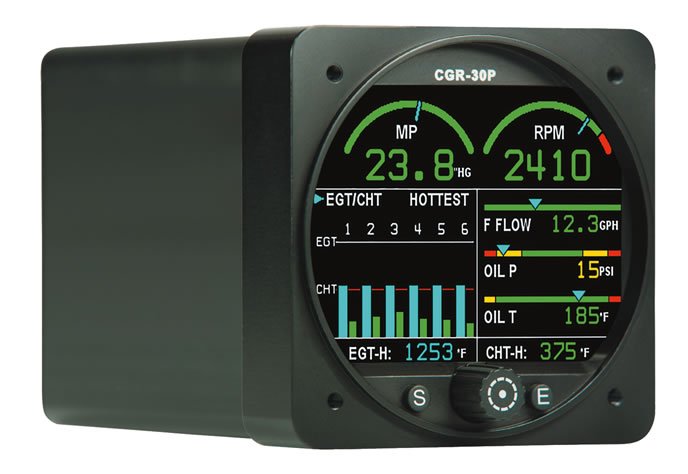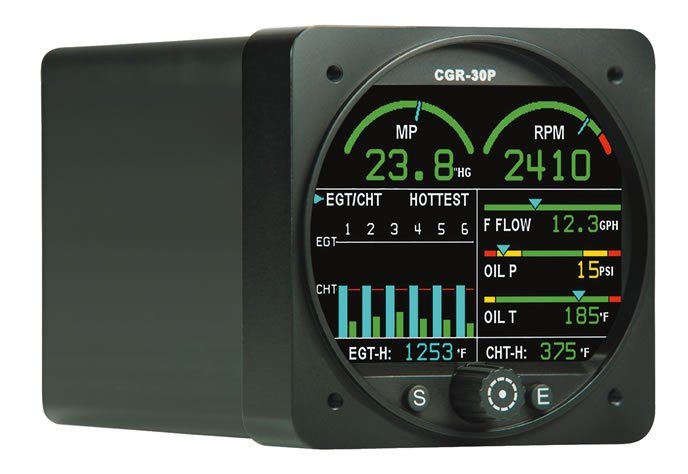If your avionics retrofit project has you paying the hefty price and dealing with the long downtime for a custom instrument panel, it’s worth considering an electronic engine instrument display. For one thing, it can save sizable amounts of panel space, while placing critical engine data in a convenient location, compared to mechanical gauges that might be scattered about the panel. Plus, it will eliminate empty holes in the panel should you upgrade later on.

But don’t assume you can ditch the old gauges. While entry-level systems from JP Instruments and Insight Avionics can display all of the parameters of a mechanical gauge (and more), not all functions are TSO-and STC-approved for primary replacement. The same rules that apply to mechanical gauge replacement also apply to electronic engine monitors.
While systems like the JP Instruments EDM 830 engine monitor can display manifold pressure, RPM, oil temperature, oil pressure and fuel pressure, in addition to cylinder and exhaust gas temperatures, it isn’t approved for use as a primary instrument. That means you might have to retain nearly all of the existing primary engine gauges. But there are a number of all-in-one systems that are approved for replacing most if not all of the primary mechanical gauges, including the JP Instruments EDM 930, the Electronics International CGR-30 and MVP-50 and the Ultra Electronics Auracle. It’s worth mentioning that Electronics International has a variety of standalone digital gauges that might be used to replace mechanical ones.
If you commit to any of these primary engine displays, get ready for a sizable project with lots of disassembly, particularly when it comes to the fuel level interface. We recently witnessed such an installation that was underway at our local avionics shop. No fewer than three technicians were tasked with completely off-loading the fuel in the aircraft fuel tanks, while running new sensors and probes to various systems on the aircraft. The task means you’ll want to have the system installed by a shop that has both avionics and powerplant technicians on staff.
Last, just because you opt for an all-in-one engine gauge system doesn’t mean it’s a free-for-all when it comes to locating the display. FAA Advisory Circular 23.1211 must be used as a reference for placing it. It recommends that a powerplant instrument be installed within a distance of 21 inches from the pilot’s visual centerline to the center of the instrument.
If it can’t be installed to those specs, the installation could require a master caution display, increasing the installation effort and the bottom line.





